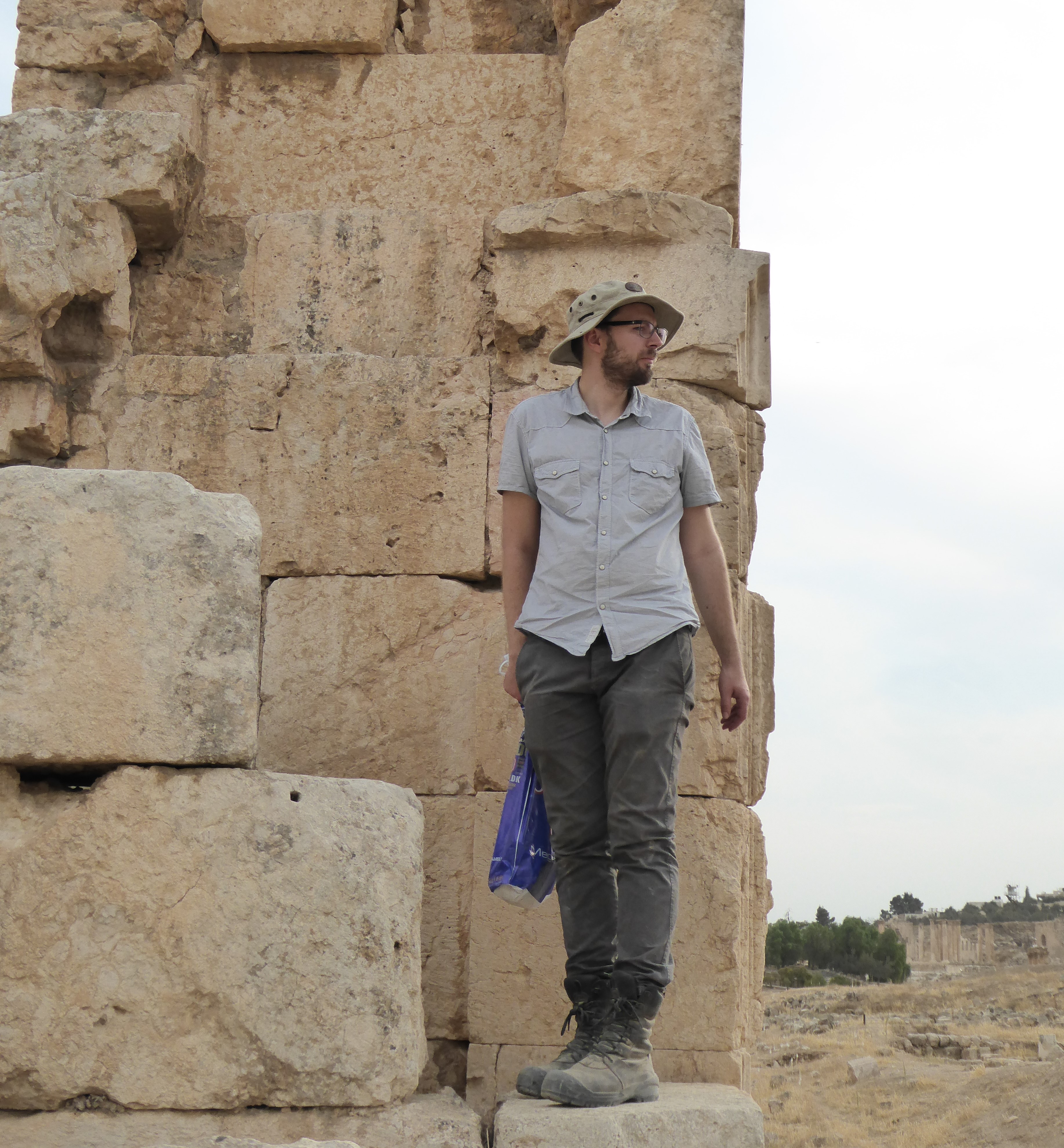Radiocarbon Dating of Lime Mortar
Summary of PhD dissertation by Thomas Schrøder Daugbjerg.

In his PhD dissertation “Radiocarbon Dating of Line Mortar”, Thomas Schrøder Daugbjerg (UrbNet and Department of Physics and Astronomy) researched radiocarbon dating of lime mortar as a chronological method for archaeology within the framework of the Danish-German Jerash Northwest Quarter Project. Thomas successfully defended his dissertation on 6 August 2021, and the defence had good discussions of mortar dating challenges and methodologies.
Mortar dating in Jerash, Jordan – challenges and aims of the PhD project
Radiocarbon dating of lime mortar is a method for dating the time of hardening of a mortar sample, or other lime-based materials such as lime plaster. This method can produce absolute chronologies and thereby contribute to the archaeological research in ancient cities such as Gerasa (modern Jerash). Gerasa is one of several well-known ancient cities in northern Jordan, and most of its archaeological remains are from the Roman era to the early Islamic period. However, previous attempts at mortar dating in Gerasa/Jerash has unfortunately met serious challenges. For example, a strong contamination of limestone grains in the sand used to produce mortar, which often make results inconclusive. The PhD project picked up the challenge of mortar dating in Jerash, by developing and researching several mortar dating methodologies.
The mortar dating methodologies investigated by this project include the following: Mortar sampling strategies to avoid certain environmental processes that can affect a mortar and make it less suitable for radiocarbon dating. Characterization methods, e.g. different types of microscopy, which give information on a mortar samples’ constituents and possible contaminations. Pre-treatment methods, e.g. mechanical separation methods, to separate the material for radiocarbon dating from possible contaminants. Preparation methods, e.g. chemical separation, for extracting carbon as CO2 from pre-treated material. An important aspect of the preparation methods used in this project is conclusiveness criteria, which can evaluate the results as conclusive or inconclusive, and thereby rule out erroneous mortar dating results from samples with contamination effects.
Methodological improvements
This project found several methodological improvements for Jerash mortar dating compared to previous work. The sampling strategy largely helped this project to work with samples free of radiocarbon exchange effects from environmental processes. The preparation method “stepwise injection” produces significantly more conclusive Jerash mortar dates than the other investigated preparation methods. With the characterization method “cathodoluminescence”, the powders that it characterizes free of geological carbonates, have significantly more conclusive mortar dates than powders with geological carbonates identified by cathodoluminescence. Furthermore, known age mortar samples critically evaluates the proposed methodologies and for these samples, prepared with stepwise injection, the conclusive dates compare accurately with their expected ages. The project’s mortar dating contributes to absolute chronologies for a Roman-period building with cistern and an Umayyad house in Jerash. The Danish-German Jerash Northwest Quarter Project, directed by Professor Achim Lichtenberger and Professor Rubina Raja, excavated these mortar and plaster samples during the 2015 and 2016 campaigns. The samples from the Roman building are pieces of painted plaster from the cistern’s backfill, associated with the building’s destruction event. The samples from the Umayyad house are from the destruction event created by the devastating earthquake in AD 749, after which Gerasa declined. Here, the mortar dates agree with the cultural eras from the archaeological contexts and the overall range of charcoal dates. Compared to previous charcoal dating in Jerash, mortar dating has a more secure sample context, and in the produced chronologies there are coinciding plaster dates indicating events with construction or renovation. Mortar dating can also identify reused elements, like a Byzantine ceramic water pipe in the Umayyad house.
Summary
Compared to previous work on mortar dating in Jerash, this project found methodological improvements that can increase the rate of conclusive mortar dates. Furthermore, compared with radiocarbon dating of charcoal, mortar dating can offer a more dependable sample context and identify construction events. The improvements found in this project may be transferable to other archaeological sites with mortar similar to Jerash and where mortar dating is mainly challenged by abundant geological carbonates.
